1940-41 Eddy Stokers
1950 National Open Champions Simpkins. Glen was instrumental in their success, but had to miss the final due to spring training.
With Frank Pee Wee Walace
With Earl Kestler
Pictured are Glen Schaeffer’s Goalie Shorts and Shoes from his last season.
During the years 1941 through 1950 that Glen Schaeffer played goal in St. Louis, many notables considered him to be ‘the best’, including United States National Soccer Hall of Fame and St. Louis Soccer Hall of Famer Frank Borghi.
Before that magic year of 1950, Glen played goal on both of the St. Louis teams that won the U.S. Open Championship: the first in 1947-1948 for the Eddy Stokers and the second in the 1949-1950 season for Joe Simpkins’ team from which five of the six of its St. Louis members went on to play for the U.S. World Cup Team that upset the English team 1-0 in Belo Horizonte, Brazil.
Glen’s son, Dan Schaeffer, actually had an interview with Mr. Borghi after the premier of the movie, THE GAME OF THEIR LIVES in 2005. Dan asked Frank, “Just how good was my father in the nets?” As always the perfect gentleman as he was known to be, Mr. Borghi commented, “Your dad was the best, and if he was not a professional baseball player and required to go to spring training, he would have been with the 1950 World Cup Team.”
Glen Schaeffer, like many of St. Louis athletes of that time, excelled at two major sports… a dynamic goal keeper but also, a professional baseball player. Glen played in the minor leagues from 1939 to 1951 for the Pittsburg Pirates, the Boston Braves, and the Washington Senators.
Glen also served in the United States Army during World War II and coached the Fort Riley, Kansas baseball team managed by Glen’s best friend and fellow St. Louisan Harold “Pistol Pete” Reiser. Not many sports fans know this but during his first five years in the Major Leagues, Pete had 10 concussions after running into outfield walls attempting to chase down long fly balls in the outfield during his playing career for the Brooklyn Dodgers. To prevent injuries for all Major League baseball players, Pete was the reason MLB installed ‘the warning track’ in all stadium outfields beginning in 1949.
While Glen was at Ft. Riley, Heavy Weight Champion Joe Louis, on a tour of Ft Riley for the War Effort, asked if he could play a little ball with the baseball team. Pete told Glen “toss the ball underhand to Joe, cause if he breaks a finger and can’t defend his Title, we both will end up in Leavenworth”.
Glen brought one thing to MLB though he never played a game in the Majors. During his soccer career, he noticed that as he dove for low shots to the goal in the dirt and grass, especially during the frozen ground of the St. Louis winters, he would get ‘strawberries’ on his outer thighs and hips. At one game, when he had a particularly sore ‘strawberry’ from a dive in a previous game, he kept a pair of his soccer shorts under his baseball uniform pants that he would wear during the baseball season. And that did the trick. From that time on, when he left the soccer field for spring training in baseball, he wore the soccer shorts under his uniform. It worked like a charm and the sliding into second, third and home bases minimized the ‘strawberries’. And the word spread, first in the locker rooms of the minor league teams and then on to the MLB that this was a way to cut down on sometimes severe sliding ‘strawberries’. Glen used to say, though somewhat insignificant, the sliding shorts were his contribution to baseball.
Glen never played with Babe Ruth, but he met ‘The Babe’ in an elevator just before his death in 1948 when Glen signed his minor league contract with the Boston Braves. As Ruth left the elevator he said, “See ya around, kid” and offered his hand. Glen always said that was a highlight in his sports career… to have shaken hands with the ‘greatest player to have ever played the game’.
Another close baseball friend of Glen’s was Bill Hayes, who was called up ‘for a cup of coffee” in spring training with the New York Yankees in the 1930’s. After his baseball career concluded, Bill owned a marketing company in Texas. He and Glen stayed close during the years by mail correspondence. Bill was also close friends with Lou Gehrig and actually sent Glen a copy of the letter (in 2002) that Bill received from Lou in 1939 regarding his diagnosis with ALS (Amyotrophic Lateral Sclerosis). It is an amazing letter (shown below) demonstrating that Lou stated the New York Yankees thought he had Gall Bladder problems for more than a year that the ALS went undiagnosed. Lou also sent Bill a signed picture plus an application for a gun permit from New Rochelle, New York.
As the soccer pictures above can attest, Glen wore his baseball cap, pants, and socks while playing goal. Most of the pictures have no facial recognition, but the outfit was none other than Glen Schaeffer, one of the best keepers in the United States.
This was Glen’s career and he was honored to be Inducted into the St. Louis Soccer Hall of Fame on November 12, 1980.
Here are a few of Glen Schaeffer’s pictures of his playing career along with his signature bat, glove, and spikes. The spikes, made of kangaroo skin, cost him $ 8.00 and his teammates told him he was crazy for spending that much money. The shoes are as smooth and flexible today, that anyone would be able to put them on and would feel like they were brand new.


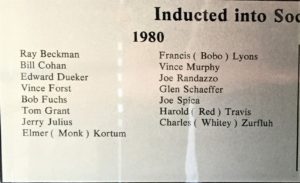
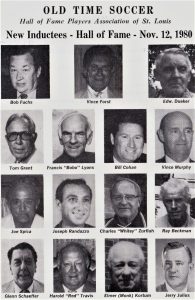
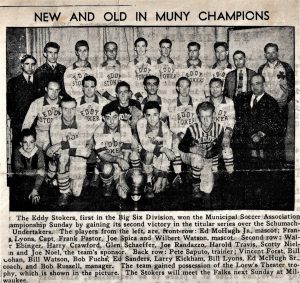
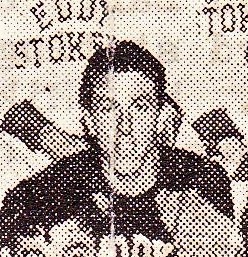
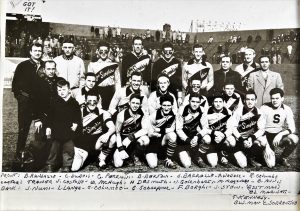
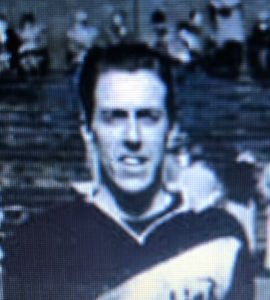

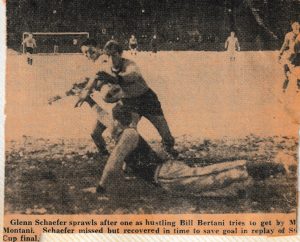
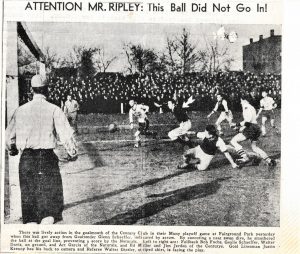
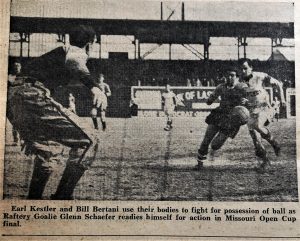
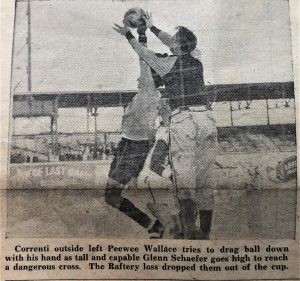
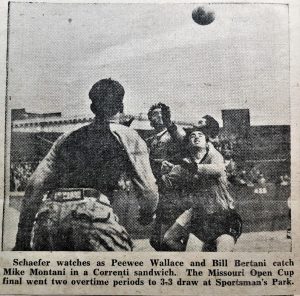
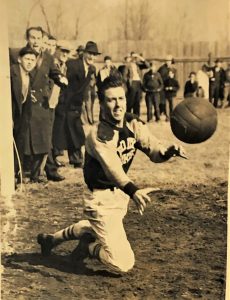
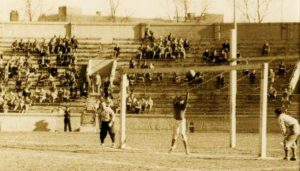
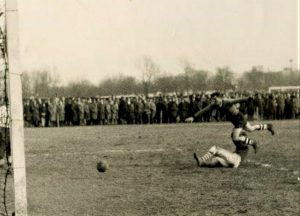

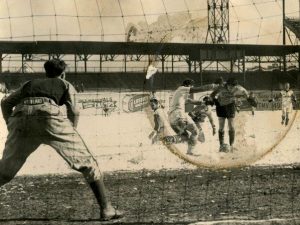
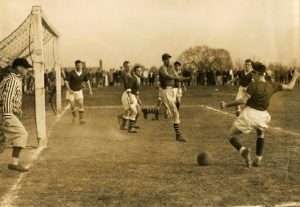
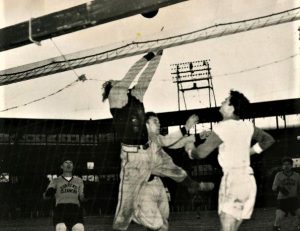
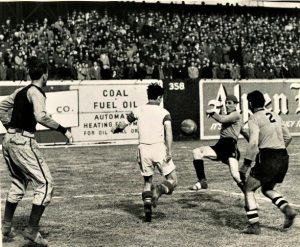
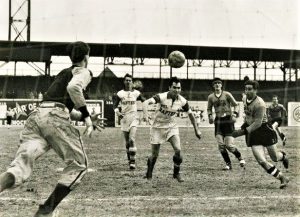
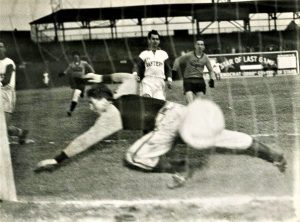
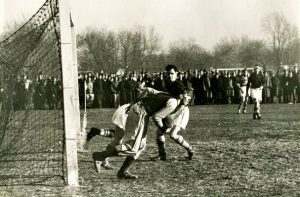
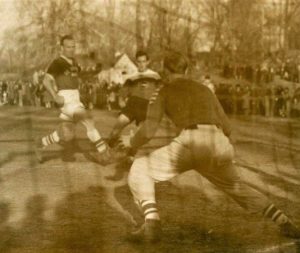
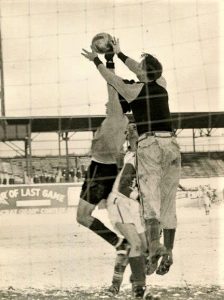
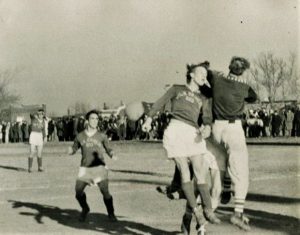

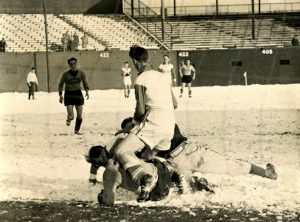
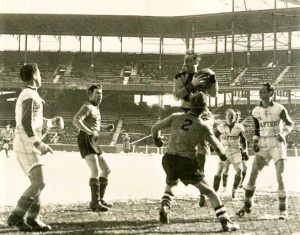
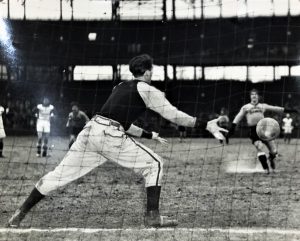
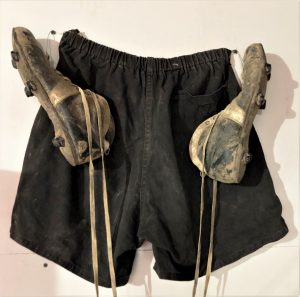

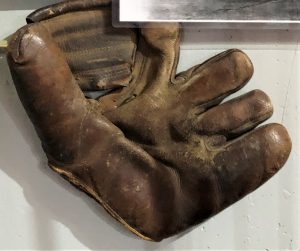
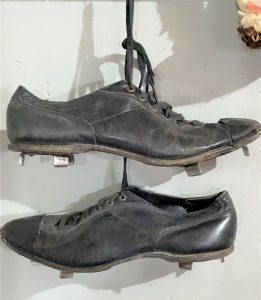
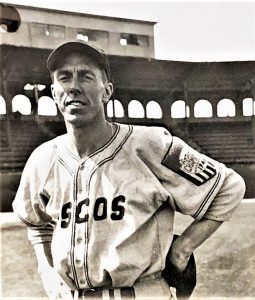
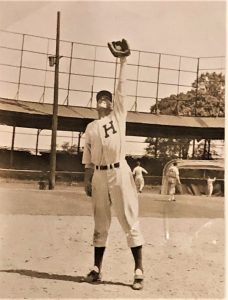
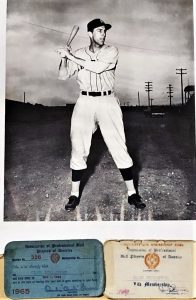
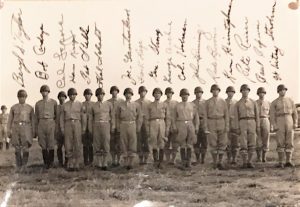
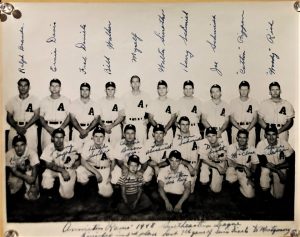
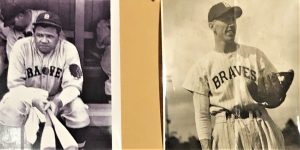
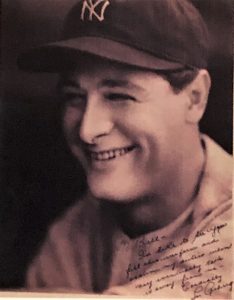
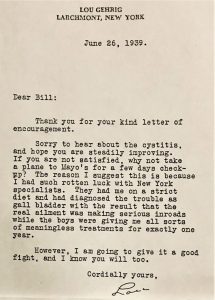
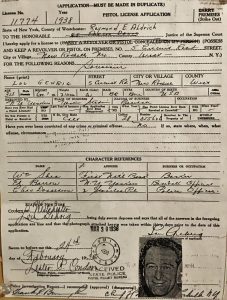
Leave a Reply
Your email is safe with us.